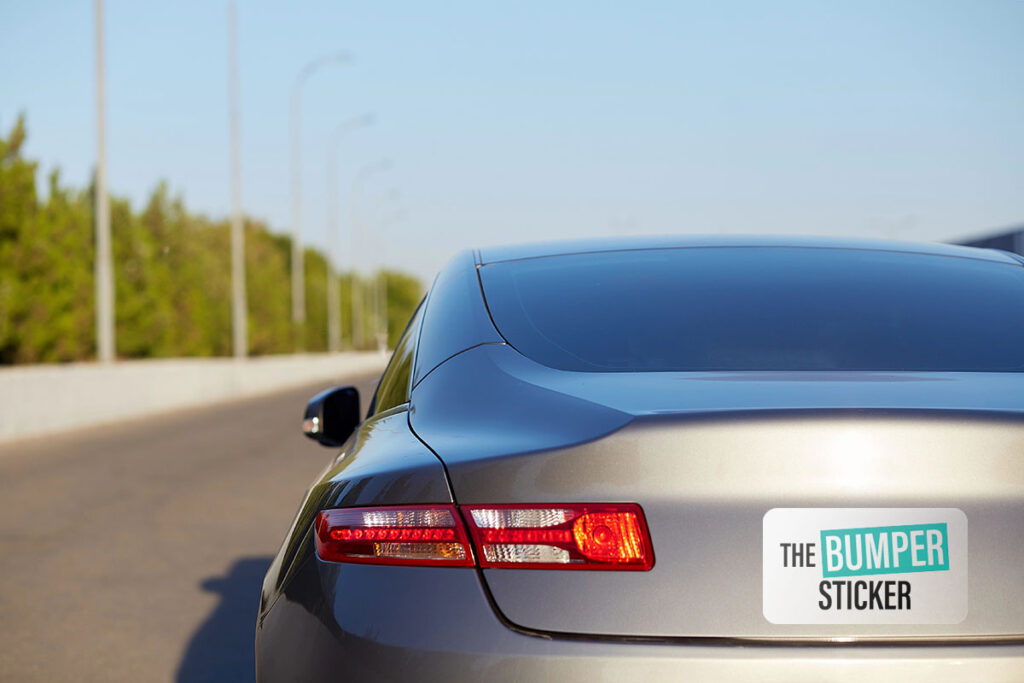Lightning Fast Turnaround!

If you’re looking to spread your message or build brand awareness with custom decals in Houston, adding them to your car without bubbles can help you achieve a professional and polished look. Bubble-free car decals can enhance your vehicle’s aesthetic while ensuring their longevity and durability.
Focus on the right techniques for flawless application to enjoy the full benefits of Houston decal services and bumper stickers.
Decals come in various forms, each suited for different applications on your vehicle. Here are the main types:
A clean surface is crucial for ensuring strong adhesion of decals. Any dirt, dust, or grease can prevent the adhesive from bonding properly, leading to bubbles and premature peeling. Here are essential points to consider:
Debris on the application area can create barriers between the decal and the surface, causing application failures.
Many commercial window cleaners contain chemicals that leave streaks or residues, which can hinder adhesion. Stick to soap or alcohol for optimal results.
Taking these steps ensures your decals adhere correctly, providing a flawless finish that enhances your vehicle’s appearance.
Applying decals to your car without bubbles requires precision and care. This section outlines the Peel and Apply Method, a straightforward approach for achieving a smooth finish.
This method minimizes air pockets and ensures even adhesion across the entire decal, enhancing longevity and appearance. Each step plays an essential role in achieving flawless results when applying decals.
Applying large decals can be challenging, but using the wet method simplifies the process. This technique allows for better positioning and reduces bubble formation. Follow these steps to ensure a smooth application:
Mix a few drops of dish soap in water to create a soapy solution. Spray this mixture on the area where you will apply the decal. This helps promote adhesion while allowing easy repositioning of the decal.
Once your decal is positioned correctly on the surface, use a squeegee or a credit card to press from the center outwards. This technique effectively pushes any trapped air toward the edges, ensuring a bubble-free finish.
Using this method not only enhances accuracy but also elevates your car’s aesthetic appeal with flawless decals.
Achieving a bubble-free finish when applying decals is crucial. Here are effective techniques to address air bubbles in car decals:
Use a squeegee or a flat card to press out air bubbles effectively. Start from the center of the decal and work your way outward. This method pushes trapped air towards the edges, preventing further entrapment.
For stubborn bubbles that resist removal, utilize a hairdryer. Set it on low heat and gently warm the area around the bubble. This softens the adhesive, making it easier to manipulate the decal. After warming, use your squeegee again to push out the bubble.
If a bubble persists after applying heat, consider using a small pin to puncture it gently. This allows excess air to escape. Be cautious with this method; avoid creating visible holes in your decal.
Implementing these techniques will help you apply decals to your car without bubbles, ensuring a smooth and professional appearance. Remember that patience and careful handling are key during this process for optimal results.
Achieving a bubble-free finish relies heavily on proper adhesion techniques. Here are essential practices:
Aim to apply decals when the temperature is between 50°F and 90°F. This range ensures the adhesive adheres effectively, preventing bubbles in car stickers. Extreme temperatures can compromise the vinyl’s flexibility and stickiness.
Leaving the transfer tape on for an appropriate duration is crucial. It’s advisable to wait at least 30 minutes to 24 hours before removing the tape. In colder conditions, extending this time enhances adhesion. The longer wait allows the decal to bond firmly with the surface.
Use a squeegee or credit card to press both the transfer tape and sticker together thoroughly. This action eliminates any air pockets that might lead to bubbles and ensures a strong bond between the decal and surface.
Applying these best practices significantly enhances your chances of achieving a flawless application, contributing to a polished appearance for your vehicle’s decals or stickers.
Applying decals can sometimes lead to frustrating issues such as wrinkles and bubbles. Understanding common mistakes can help you avoid these problems.
Using a hairdryer can be an effective way to address stubborn bubbles or wrinkles:
If issues arise after application, consider these strategies:
Achieving bubble-free car decals requires practice and attention to detail. Here are some essential tips:
Consistently use the recommended methods, such as the peel-and-apply technique or the wet method for larger decals. This will help you gain confidence and skill in applying decals.
Ensure that you apply decals when temperatures are between 50-90°F. This range promotes better adhesion and reduces the likelihood of bubbles forming.
Allow the transfer tape to remain on the decal longer if needed, especially in cooler conditions. The suggested timeframe is 3 to 24 hours before removal.
Personalized vehicle aesthetics enhance your car’s character. Well-applied decals can transform your ride and showcase your unique style. With these expert tips, you can confidently apply decals without bubbles, ensuring a flawless finish every time.
Applying car decals without bubbles ensures a flawless appearance, enhances the overall aesthetics of your vehicle, and improves adhesion longevity. Properly applied decals also prevent peeling and damage from air pockets.
There are several types of decals available for cars, including vinyl decals, car window stickers, bumper stickers, and popular anime stickers. Each type has unique characteristics suited for different applications.
To prepare the surface for decal application, it’s essential to clean it thoroughly. Use a cleaning solution like soap and water or alcohol to remove any dirt or residues. Avoid window-cleaning products that may leave behind a film.
The ‘peel and apply’ method involves carefully peeling the backing off the decal and applying it directly to the cleaned surface. For larger decals, consider using masking tape for precise placement before fully adhering.
To remove air bubbles during application, use a squeegee or a flat card to press them out effectively. For stubborn bubbles, applying gentle heat with a hairdryer can help smooth them out.
For optimal adhesion, apply decals in a temperature range of 50-90°F. Leave transfer tape on until the decal is firmly pressed down, and ensure both the transfer tape and sticker are well adhered together before removal. Contact us today to discuss custom stickers and decals in Houston TX to personalize your ride with quality, eye-catching options.
|
Uploaded
Failed
|
 |